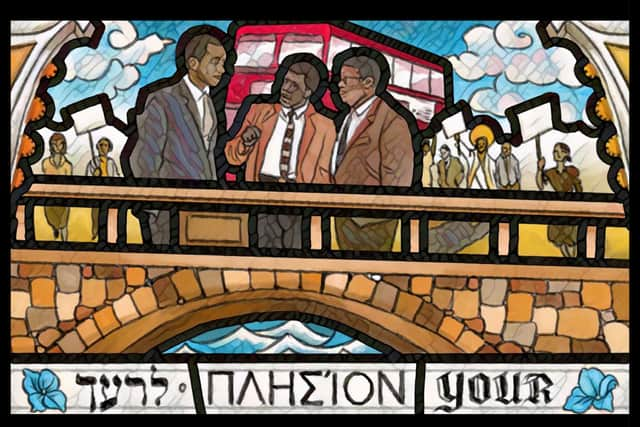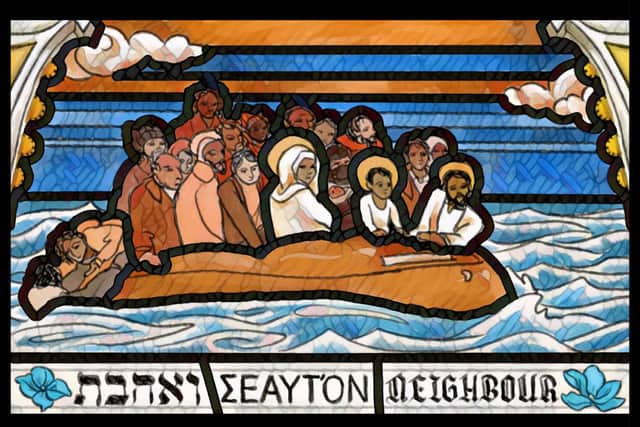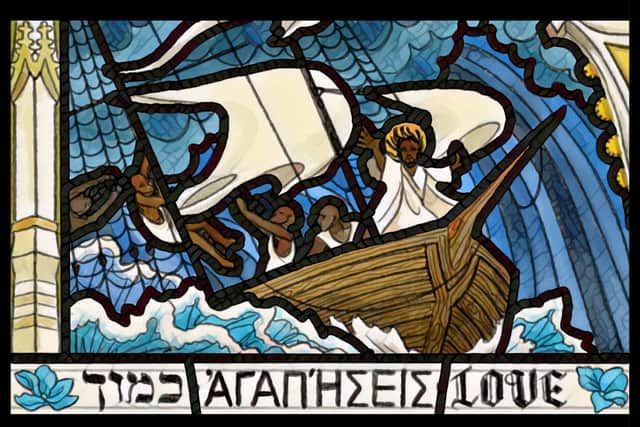St Mary Redcliffe church replaces Colston stained glass window with picture of 1963 civil rights bus boycott
and live on Freeview channel 276
A picture of a 1963 civil rights bus boycott is set to replace a stained glass window once dedicated to slave trader Edward Colston.
St Mary Redcliffe church in Bristol made the decision to remove four stained-glass panels dedicated to Colston two years ago following the toppling of his statue.
Advertisement
Hide AdAdvertisement
Hide AdThe window was temporarily replaced with plain panels and the church invited the public to submit new designs in a competition.
The panels formerly made up the bottom section of the North Transept window, commonly known as The Good Samaritan, depicting the story which Colston had taken as his motto.
The new panel celebrates celebrates the Bristol Bus Boycott, which artist Ealish Swift explains “paved the way for the Race Relations Act of 1965, with Jesus as a fellow protester and radical.”
The Bristol Bus Boycott of 1963 arose from the refusal of the Bristol Omnibus Company to employ black or Asian bus crews in the city.
Advertisement
Hide AdAdvertisement
Hide AdIn alignment with other UK cities, there was widespread racial discrimination in housing and employment at that time against people of colour.


Led by youth worker Paul Stephenson and the West Indian Development Council, the boycott of the company’s buses by Bristolians lasted for four months until the company backed down and overturned the colour bar.
Although prompted by the toppling of the Colston statue, the replacement of the Colston window was part of a larger process at St Mary Redcliffe in the ongoing exploration of and engagement with contested heritage which will continue over the coming months and years.
The grade I-listed church is deeply rooted in British history, having been described by Queen Elizabeth I upon her visit in 1574 as ‘the fairest, goodliest and most famous parish church in England.’
Advertisement
Hide AdAdvertisement
Hide AdA spokesperson from the church said they launched the competition as “part of an ongoing process of reflection and action to ensure that today’s church building echoes St Mary Redcliffe’s stated values and is welcoming to all.”
The theme of the entries - ‘And who is my neighbour?’, was to explore a contemporary understanding of what it means to be a good Samaritan today.


Behind the winning design is Bristol based junior doctor and artist, Ealish Swift. Ealish explained her design draws upon the “the deep and complex historyof Bristol, from atrocities of the past to modern day concerns, to remind us of the journeys of our neighbours and how we have come to be together at this moment, looking forwards towards a shared future.”
Ealish was unable to be at the unveiling of her design as she was performing surgery, but was delighted to find out she was the winner.
Advertisement
Hide AdAdvertisement
Hide AdShe said: “I am deeply honoured that my design has been chosen for this wonderful space that means so much to me.
“I can’t wait to work with the amazing Steve Clare to bring my ideas to life.


“I’m thrilled that my design seemed to resonate so much with the local community and I hope everyone will come to visit to see the final piece and experience everything this wonderful church, and community, has to offer!”
The winning design is on display in a small temporary exhibition at St Mary Redcliffe until October 9 and next year will be recreated in stained glass.
Advertisement
Hide AdAdvertisement
Hide AdParish Priest, Dan Tyndall, said: “The winning design is powerful and imaginative, managing to resonate with contemporary issues and yet will also stand the test of time.
“Ealish’s concept was very popular with visitors to the church and will sit well within the current Victorian window”.
The temporary exhibition in church will be on display until October 9. It will be available whenever the church is open.
Comment Guidelines
National World encourages reader discussion on our stories. User feedback, insights and back-and-forth exchanges add a rich layer of context to reporting. Please review our Community Guidelines before commenting.